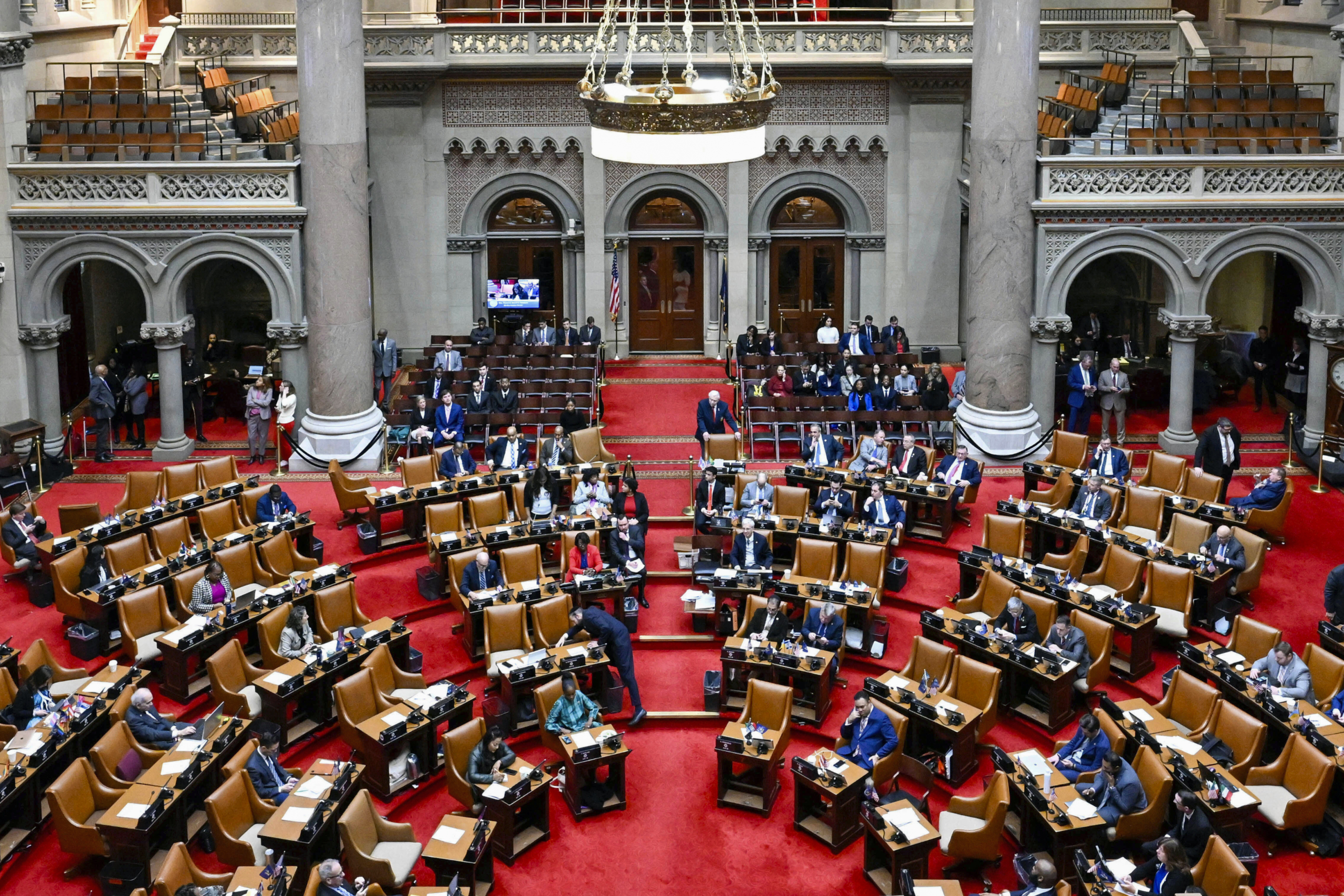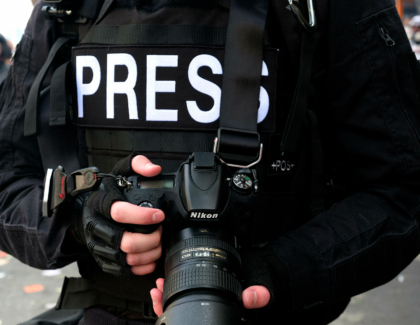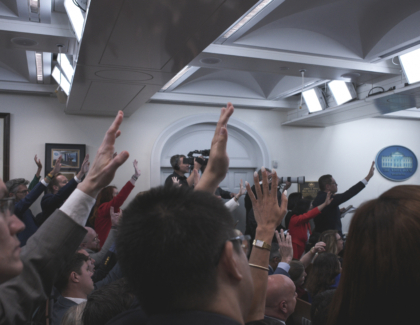Sign up for the daily CJR newsletter.
New York has become the first state to commit significant resources toward keeping local journalism alive. It’s a good start that the legislation’s proponents hope could serve as a national model to save struggling local news outlets—if it can be implemented properly.
The Local Journalism Sustainability Act was included in New York’s recently passed state budget, setting aside $90 million to subsidize local news for the next three years. Eligible outlets can apply to receive a refundable tax credit of up to $25,000 for the first $50,000 worth of employees’ salaries, with a per-company cap of $300,000. That’s a lot of money for a small newsroom, and could help stave off further layoffs and outlet closures.
The $30 million annual pool will be evenly divided between small and larger newsrooms, with the dividing line at 100 employees. Each group will have access to a total of $13 million in tax breaks, with an additional $4 million set aside as $5,000 subsidies for new hires. Publications owned by publicly traded companies aren’t allowed to apply, which would likely rule out places like the New York Times and New York Post. (In certain other cases, like Gannett’s multiple local papers, an outlet owned by a publicly traded company may be eligible because of a carve-out for publications whose print circulation has dipped by more than 20 percent in the past five years.)
The legislation had originally been proposed a few years ago by state lawmakers, but didn’t gain traction until earlier this year, when a group of three dozen local news companies formed the Empire State Local News Coalition to advocate its passage. The coalition includes the owners of more than 150 small newspapers in the state—publications that cover small towns or specific communities, like the Sullivan County Democrat, the Lake Placid News, the Haitian Times, and the Jewish Star.
The coalition is spearheaded by Zachary Richner, a former staffer in both the Obama White House and former New York governor Andrew Cuomo’s administration, whose family runs two dozen small daily and weekly newspapers, most of them based on Long Island.
Richner told me he’d previously focused on pushing national legislation to fund journalism, but because of Congress’s glacial pace and gridlock, he’d decided to shift his attention to New York earlier this year. That left a short window to get things done before the state’s annual budget was finalized, so he scrambled to put together a lobbying effort.
“I hope that this is the first domino to fall, that it allows other states to move forward with legislation that supports local news,” Richner said. ”I hope it adds some momentum to what we’re doing at the national level.”
In the rush to get the law passed, however, some crucial legislative details weren’t hammered out.
For one thing, the way the law is worded doesn’t make it clear if digital-only publications can receive the tax breaks—the law only identifies “print media or broadcast media” as eligible—a major omission that the coalition hopes can be cleared up as the program is formalized. Second, the bill doesn’t specify whether the tax credits apply only to journalists, or if they can be used for people working on the business side of a publication.
The bill only provides incentives to hire full-time journalists, leaving out the freelancers and part-timers many smaller community papers rely on. That’s a good thing in that it may encourage outlets to bring on reporters as full-time staff, but it doesn’t help papers that are struggling just to pay freelancers right now. It also seems doubtful that a one-time, $5,000 subsidy for a new staffer is really enough to spur hiring. And while outlets may hope this program is continued into the future, three years of credits probably isn’t enough for businesses to make long-term hiring decisions.
Meanwhile, the way the pool of tax credits is divided could leave publications wanting. There could be a very high demand for the $13 million set aside for small newsrooms, and some might not get the amount they’re hoping for. On the other hand, $13 million might be too much to spread out between the relatively few newsrooms with more than 100 staffers, given that there is a cap of $300,000 per publication. (It also may not have as much impact: the capped amount, while more than generous for small newsrooms, won’t have a huge effect on larger organizations with steeper total costs.) Advocates for the legislation think this pool of money might need to be rebalanced in future years, and expressed hope that the officials who manage the program will be willing to use any unclaimed funds from the pool for larger companies to give additional tax credits to smaller companies.
Some journalism watchdogs have raised concerns about news outlets lobbying the very state lawmakers they’re supposed to be covering to pass this bill. The fear is that some news organizations might pull their punches in covering the lawmakers responsible for approving a program they depend on for their livelihood.
Richner says the legislation is set up so that the Empire State Development Corporation—a separate department, under the governor’s office, largely staffed with bureaucrats rather than politicians—will serve as a buffer, as it will determine who gets funds. And there are always potential conflicts of interest in journalism; small-town publishers know this best, since they’re so dependent on advertising from local businesses owned by powerful local figures including elected officials. Journalists at reputable news outlets that rely on public money already, like NPR or PBS, have shown they’re eager to aggressively cover the lawmakers who fund their salaries.
For now, at least, publishers and editors who are poised to receive the aid seem mostly relieved. Mark Vinceguerra owns Capitol Region Independent Media, which comprises a half dozen small-town newspapers in upstate New York. Like most newspapers, his have seen advertising revenue take a huge dip in recent years. He currently has two full-time employees and a dozen paid freelance stringers filling his publications. If he gets all the grant money, he thinks he could hire six or seven additional full-time staff reporters.
“This is what’s needed,” Vinceguerra said, adding that he hoped this and future efforts can fix the journalism funding crisis in the state and make it “a beacon for the nation.”
“I’m ecstatic, pure and simple,” he said.
Other notable stories:
- Over the weekend, the Israeli government moved to shut down Al Jazeera’s operations in the country, making good on a long-term threat that lawmakers finally authorized last month; yesterday, police raided a Jerusalem hotel that the broadcaster has been using as a base and took away equipment. Israeli officials have accused Al Jazeera, which is funded by Qatar, of endangering its national security and of “incitement,” but Al Jazeera condemned the move as being part of a broader bid on Israel’s part to “conceal its actions in the Gaza Strip”; a diplomatic source, meanwhile, told Haaretz that the timing of the decision appeared intended to increase pressure on Qatar, which is helping to mediate Israeli negotiations with Hamas. Various press-freedom groups criticized the closure as a step down a slippery slope, as did the editorial board of Haaretz.
- Meanwhile, protests in solidarity with Gaza continued on US college campuses. Over the weekend, police cleared a protest encampment at the University of Southern California; student journalists reported being pushed back, though one local news network was allowed on campus, according to The Wrap. Elsewhere, New York magazine collaborated with student journalists at the Columbia Daily Spectator to produce a cover story narrating recent campus tensions there from the inside. The Spectator’s top editors blasted university administrators for suppressing press freedom. And on CJR’s podcast The Kicker, Josh Hersh spoke with Jelani Cobb, the dean of Columbia Journalism School, about how he and his colleagues helped students cover the crisis.
- Last night, Kim Godwin stepped down as president of ABC News and told staff that she is retiring from broadcast journalism—a decision that followed reports that she had increasingly been sidelined inside the network since a restructuring earlier this year. Godwin’s detractors have charged that she “stifled discussion and dissent” internally and that she “seemed more focused on boosting her profile than in the grind of running a news division,” the Wall Street Journal reports. Her defenders have countered that she improved the newsroom environment at ABC—and that, as the first Black person to run a major broadcast news division, she was “scrutinized in ways other executives weren’t.”
- Over the weekend, the union that represents many staffers at Condé Nast laid down a challenge to management amid unresolved negotiations over a contract: “meet us at the table or meet us at the Met on Monday,” a reference to possible protests at the Met Gala, which is scheduled to take place tonight. At time of writing on Monday morning, no deal had been announced and a picket seemed likely. Last week, union members rallied at Condé headquarters and plastered the neighborhood of Anna Wintour, the company’s chief content officer, with fliers that read, “Anna Wears Prada, Workers Get Nada.”
- And the rollout of a book by Kristi Noem, the governor of South Dakota (and possible vice presidential pick for Donald Trump), has generated controversy—first for Noem’s admission that she once shot a fourteen-month-old dog, then for its apparently false claim that Noem once met with Kim Jong Un, the North Korean dictator. Appearing for an interview on CBS yesterday, Noem defended the killing of her dog but suggested that the Kim claim would be edited out after “it was brought to my attention.”
New from CJR: A podcast discussion with Jelani Cobb on the crisis at Columbia
Has America ever needed a media defender more than now? Help us by joining CJR today.







